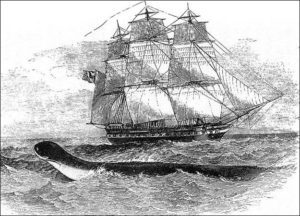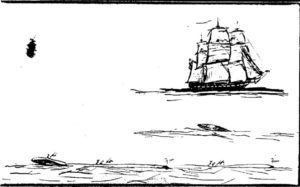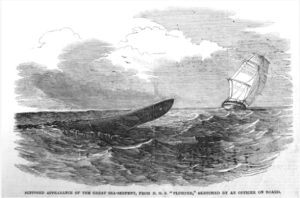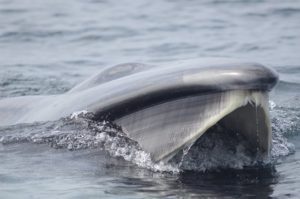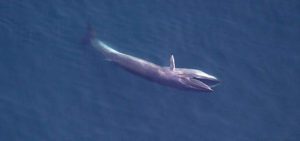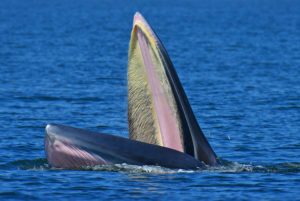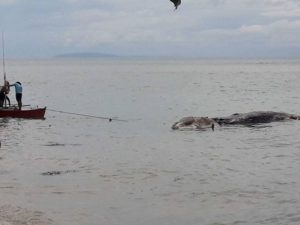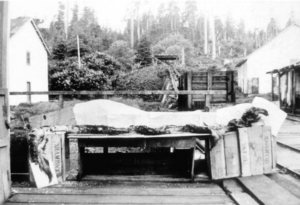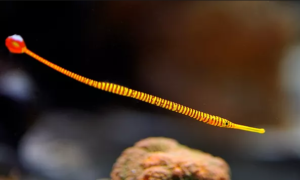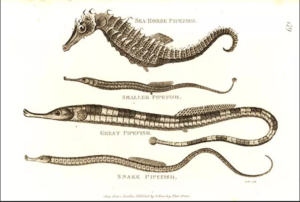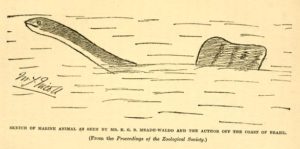Podcast: Play in new window | Download (Duration: 13:01 — 14.0MB)
We have more mystery animals this week, horrible carcasses that have washed ashore and are hard to identify! It’s a sequel to our popular Globsters episode, episode 87. None of these are actual mysteries but they’re all pretty gross and awesome.
(I don’t know what I did wrong with the audio but it sounds bad, sorry. I just got a new laptop and have been experimenting with improving audio, and this was obviously a failed experiment.)
Further reading:
The Conakry monster: https://scienceblogs.com/tetrapodzoology/2010/05/30/conakry-monster-tubercle-technology
Brydes whale almost swallows a diver! https://www.nwf.org/Magazines/National-Wildlife/2015/AugSept/PhotoZone/Brydes-Whales
The Moore’s Beach monster: https://scienceblogs.com/tetrapodzoology/2008/07/08/moores-beach-monster
The Tecolutla Monster: https://scienceblogs.com/tetrapodzoology/2008/07/10/tecolutla-monster-carcass
Further watching:
Oregon’s Exploding Whale Note: The video says it’s a Pacific grey whale but other sources say it’s a sperm whale. I called it a sperm whale in the episode but that may be incorrect.
The Conakry monster:
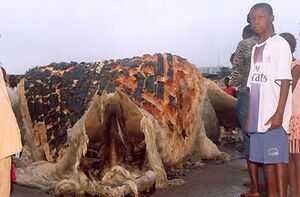
The Ataka carcass:
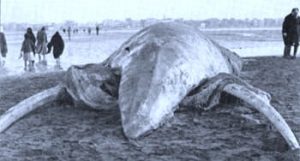
A Bryde’s whale hunting (left) and with its throat pleats expanded to hold more water (right):
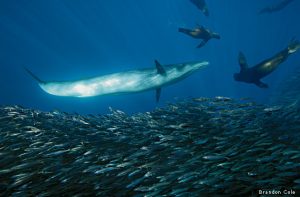
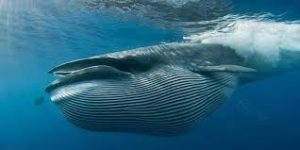
The Moore’s beach monster:
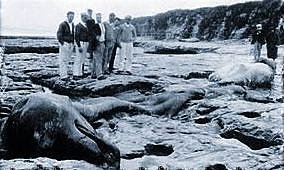
Baird’s beaked whales in better circumstances:
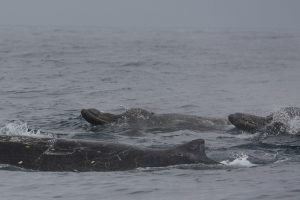
The Sakhalin Island woolly whale and a detail of the “fur” (decomposing connective tissue):
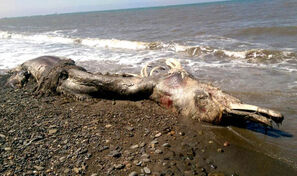
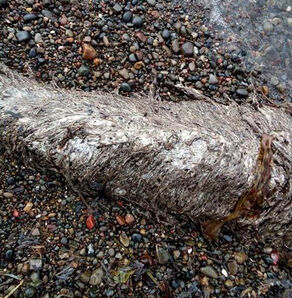
The Tecolutla monster (yeah, kind of hard to make out details but the guy in the background has a nice hat):
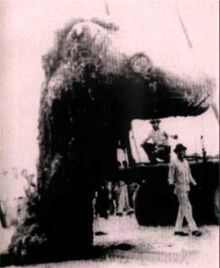
What not to do with a dead whale:
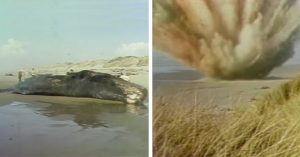
Show transcript:
Welcome to Strange Animals Podcast. I’m your host, Kate Shaw.
Remember episode 87 about globsters? Well, let’s revisit some globsters I didn’t mention in that episode, or basically just any weird dead animals that have washed ashore in various parts of the world.
We’ll start with the Conakry monster, which I learned about while I was researching last week’s episode about small mystery animals. In May 2007 a huge, peculiar-looking dead animal washed ashore in Guinea in Africa. It looked like a badly decomposed alligator of enormous size, with black plates on its back that almost looked burnt. It had a long tail and legs, but it also had fur. Its mouth was huge but there were no teeth visible.
If you’ve listened to the globsters episode, you can guess what this was just from the mention of fur. It’s not fur, of course, but collagen fibers, a connective tissue that’s incredibly tough and takes years, if not decades, to fully decompose. But what’s up with the burnt-looking plates on its back? Well, that’s actually not rare in decomposing whales. And it’s not even on its back; the carcass is lying on its back, so the plates are on its belly. You can even see the ventral pleats that allow it to expand its mouth as it engulfs water before sieving it out through its baleen.
So yes, this is a dead baleen whale, and we even know what kind. The legs aren’t legs but flippers, and details of their shape and size immediately let whale experts identify this as a humpback whale.
Another strange sea creature, referred to as the Ataka carcass, washed ashore in Egypt in January 1950 after a colossal storm that didn’t let up for 72 hours. When the storm finally abated, a huge dead animal was on the beach. It was the size of a whale and looked like one except that it had a pair of tusks that jutted out from its mouth. Witnesses said it had no eyes but they did note the presence of baleen.
The baleen identified it as a whale, but what about those tusks? Well, it turns out that those are bones that were exposed by the stormy water. They’re called mandible extensions and the whale itself was identified as a Bryde’s whale. It resembles a sei whale and not a whole lot is known about it.
The longest Bryde’s whale ever measured was just under 51 feet, or 15.5 meters. It’s related to blue whales and humpbacks and mostly eats small fish like anchovies, cephalopods, and other small animals. It’s a swift, slender whale, the only baleen whale that lives year-round in warm water so it doesn’t need blubber to keep it warm.
And you know what? A DIVER WAS ONCE SWALLOWED BY A BRYDE’S WHALE. Okay, it didn’t actually swallow him but it gulped him into its mouth when he was swimming near a school of fish. Fortunately for the diver, after a few minutes the whale spat him out. Another diver had a close call in 2015 when a whale charged past him to gulp down some fish that he was photographing, and he was nearly swallowed and then was nearly hit by the whale’s tail.
Anyway, in baleen whales the lower jaw is made of two separate bones called mandibles, mandible extensions, or just lower jaws. They’re only loosely attached and often separate after death, especially after being tossed around in a storm.
Even longer ago, in 1925, a weird dead animal with a duck-like bill and long neck washed ashore at Moore’s Beach near Santa Cruz, California. It’s now called Natural Bridges State Beach. It was almost twenty feet long, or six meters.
A man named E.L. Wallace said it was a plesiosaur that had been frozen in a glacier, and when the glacier melted the carcass was washed south to California. But when someone took the carcass to the California Academy of Sciences, biologists immediately recognized it as a Baird’s Beaked Whale, also called Baird’s fourtooth whale. The head was nearly severed from the body, only connected by a twist of blubber that looked like a long neck. The school kept the skull, which is still on display.
The Baird’s beaked whale lives in the northern Pacific and can grow 42 feet long, or nearly 13 meters. Its dorsal fin is small and toward the back of its body, and its flippers are short and rounded. It has a bulbous melon, the bump on the forehead that helps in echolocation, and long jaws that do sort of resemble a duck’s bill, a little. Males fight by using their four sharp teeth, which jut out from the lower jaw and are always exposed, so that they eventually get barnacles growing on them, but females have the teeth too.
The Baird’s beaked whale is a deep diver that mostly eats deep-sea fish and cephalopods, but it will also eat crustaceans and other invertebrates. It hunts throughout the day and night, unlike most other whale species, and researchers think it probably doesn’t use its eyes much at all, certainly not to hunt. It has well-developed echolocation that it uses instead.
In 2015, a carcass now dubbed the woolly whale washed ashore on Sakhalin Island, which is part of Russia even though it’s very close to Japan. It was more than 11 feet long, or 3 1/3 meters, with a birdlike bill and fur, but it was later identified as another Baird’s beaked whale. That’s not the first weird carcass washed up on Sakhalin Island, but it’s the most well documented.
On the other side of the world, in the town of Tecolutla in Veracruz, Mexico in 1969, some locals walking along the beach at night saw a monster in the water. It was 72 feet long, or 22 meters, with a beak or fang or bone jutting from its head–reports vary–huge eye sockets, and was covered with hair-like fibers. Some witnesses said it was plated with armor too. It was floating offshore and later the people who found it claimed it was still alive when they first saw it. Since the hairy fibers are a sign of a whale or shark that’s been dead and decomposing in water for considerable time, they probably mistook the motion of the carcass in the waves for a living animal swimming.
But the locals who found the carcass thought its bones were made of ivory and would be valuable. They kept their find a secret for a week and managed to haul it onshore. It took them 14 hours and was probably really smelly work. They tried to cut it apart on the beach but only managed to remove the enormous head. By that time the rest of the body was starting to get buried in sand.
At that point the locals, frustrated, decided they needed heavy machinery to move the thing. They told the mayor of Tecolutla that they’d discovered a crashed plane, probably expecting the city to send out a crane big enough to move a small plane and therefore big enough to move their monster. But, of course, when the volunteer rescue party showed up to the supposed plane crash, all they found was a really stinky 72-foot-long corpse. The mayor decided that a stinky 72-foot-long corpse was exactly what tourists wanted to see, so instead of hauling it out to sea or burying it, he moved it in front of the town’s lighthouse so people could take pictures of it.
He was right, too. A college student who traveled to the town to film the event said there were a hundred times more tourists in the area than usual, all to look at the monster.
What photos we have of the monster aren’t very good and basically just show a big long lump. Biologists finally identified it as the remains of a sei whale, a baleen whale that you may remember from episode 67, about sea monsters. Living Sei whales are probably the source of at least some sea monster sightings. The horns or beak were probably jaw bones, as in the Ataka carcass we talked about earlier.
Let’s finish with something a little different. This isn’t exactly a globster or hard-to-identify monster, but just a plain old obvious sperm whale carcass that washed ashore in Florence, Oregon in the western United States in November 1970. It was 45 feet long, or 14 meters, and was way too big and heavy to move. So instead of towing it out to sea or burying it in the sand, the local authorities decided the best way to get rid of the massive stinky dead animal was of course to blow it up with dynamite.
But no one was sure how much dynamite to use, even though an expert who happened to be in town said twenty sticks of dynamite would be plenty. Instead, they used twenty CASES. That’s half a ton of dynamite.
It was way too much dynamite. I mean, honestly, any dynamite would have been too much, but this was way way too much. The carcass exploded and sent chunks of blubber flying at least a quarter mile. And remember that expert who said “whoa there, twenty sticks of dynamite is enough”? He was there, driving a brand new car. Well, a big chunk of blubber fell right on his new car and destroyed it.
After all that, most of the whale carcass remained where it was. The dynamite had mostly blown a big hole in the sand and only exploded part of the whale. Fortunately no one was hurt.
These days, Oregon buries any dead whales that wash ashore.
You can find Strange Animals Podcast online at strangeanimalspodcast.blubrry.net. That’s blueberry without any E’s. If you have questions, comments, or suggestions for future episodes, email us at strangeanimalspodcast@gmail.com. If you like the podcast and want to help us out, leave a rating and review on Apple Podcasts or wherever you listen to podcasts. We also have a Patreon at patreon.com/strangeanimalspodcast if you’d like to support us that way.
Thanks for listening!
